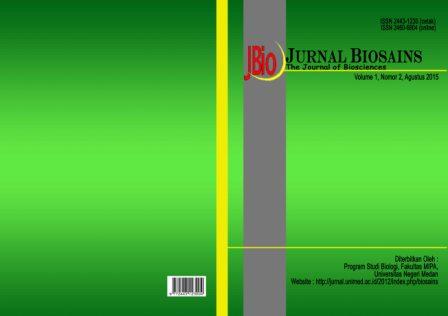Test Antifungal Phatogen Extract Secondary Metabolites Of Endophytic Fungi Raru Plant (Cotylelobium melanoxylon)
DOI:
https://doi.org/10.24114/jbio.v1i2.2781Abstract
This study aims to determine the ability of extracts secondary metabolites of endophytic fungi raru plant Siarang (Cotylelobium melanoxylon) in inhibiting the growth of pathogenic fungi. Pathogenic fungi tested were Collectotrichum, Fusarium oxysporum, Candida albicans and Sclerotium rolfsii. Test antifungal pathogens carried out by using the method of Kirby-Bour, ie by measuring the clear zone located around the paper disc which is the zone of growth inhibition of pathogenic fungi. Measurement of inhibition zone is done by using a caliper or ruler. The results showed that the secondary metabolites of endophytic fungi extracts could inhibit the growth of pathogenic fungus Candida albicans is the clear zone of 10.23 mm. Keywords : endophytic fungus, Cotylelobium melanoxylon, extract of secondary metabolites, fungal pathogens, inhibition zoneDownloads
Issue
Section
License
For Authors Jurnal Biosains agree to the following terms:
Authors retain copyright and grant the Jurnal Biosains (JBIO) right of first publication with the work simultaneously licensed under a Creative Commons Attribution License (CC BY-SA 4.0) that allows others to share (copy and redistribute the material in any medium or format) and adapt (remix, transform, and build upon the material) the work for any purpose, even commercially with an acknowledgement of the work's authorship and initial publication in JBIO (Jurnal Biosains)
Authors are able to enter into separate, additional contractual arrangements for the non-exclusive distribution of the journal's published version of the work (e.g., post it to an institutional repository or publish it in a book), with an acknowledgement of its initial publication in JBIO (Jurnal Biosains)
Authors are permitted and encouraged to post their work online (e.g., in institutional repositories or on their website) prior to and during the submission process, as it can lead to productive exchanges, as well as earlier and greater citation of published work (See The Effect of Open Access).


